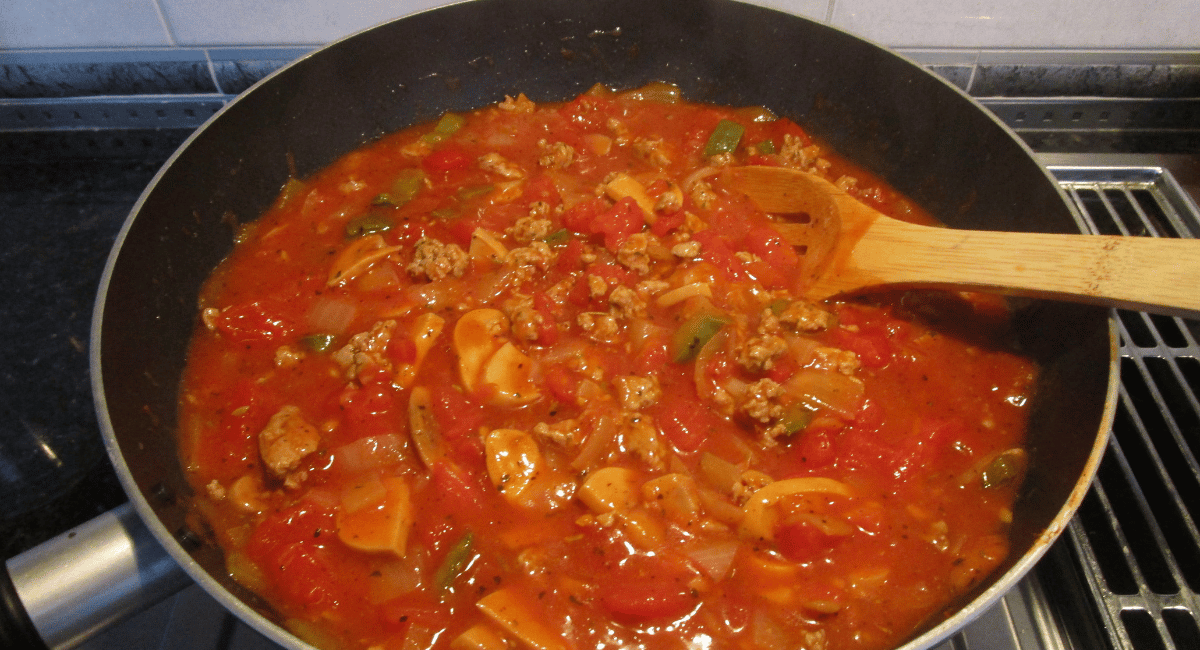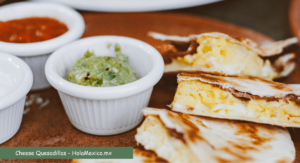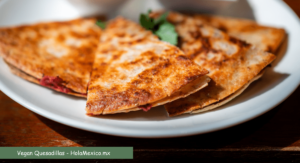Simmering is a gentle cooking technique where ingredients are cooked at a temperature just below boiling point. It involves maintaining a low, steady heat that causes tiny bubbles to form slowly and gently break the surface of the liquid. This method allows ingredients to cook gradually without vigorous boiling.
Differences from Other Cooking Methods:
- Boiling vs. Simmering: Boiling involves cooking at a higher temperature with rapid, rolling bubbles breaking the surface, while simmering is a gentler process with slower and smaller bubbles.
- Braising vs. Simmering: While braising involves slow cooking in a covered pot with some liquid, simmering may involve cooking ingredients in a larger amount of liquid, typically for soups, stews, or sauces.
Cultural and Culinary Significance:
Importance of Simmering in Mexican Culinary Traditions:
- Even Cooking and Flavor Infusion: Simmering allows ingredients to cook evenly and infuse flavors slowly, resulting in depth and richness in dishes like soups, stews, and sauces.
- Tenderizing Tough Ingredients: Simmering is effective for breaking down tough cuts of meat, beans, or vegetables, transforming them into tender and flavorful components of traditional Mexican dishes.
Contribution to Flavors, Textures, and Authenticity:
- Flavor Development: Slow simmering of ingredients, often combined with various spices, herbs, and aromatics, helps create complex and layered flavors, characteristic of Mexican cuisine.
- Texture Enhancement: Simmering allows ingredients to soften gradually without breaking apart, contributing to the desired textures in dishes like pozole, birria, or various soups and stews.
- Authenticity in Traditional Dishes: Many iconic Mexican dishes, such as mole, menudo, or caldo de res, rely on simmering as a primary cooking technique to achieve their authentic taste and texture profiles.
Simmering plays a fundamental role in Mexican culinary traditions by slowly infusing flavors, tenderizing ingredients, and contributing to the depth and authenticity of a wide array of traditional dishes, showcasing the richness and diversity of Mexican cuisine.
Ingredients Commonly Simmered in Mexican Cuisine:
Common Ingredients for Simmering:
Meats:
- Beef: Used in various stews like birria, caldo de res (beef soup), or barbacoa, simmered until tender with aromatic spices and vegetables.
- Chicken: Often simmered in soups (caldo de pollo), shredded for tacos, or used in dishes like pozole, imparting its flavors into the broth.
Beans and Legumes:
- Black Beans, Pinto Beans: Simmered slowly to create dishes like frijoles de la olla or refried beans, resulting in creamy and flavorful beans.
- Lentils: Used in soups or as a base for vegetarian dishes, simmered with spices and vegetables for depth of flavor.
Vegetables:
- Tomatoes: Simmered for sauces like salsa roja or tomato-based stews like caldo de camarón (shrimp soup).
- Chilies: Simmered to soften and infuse their flavors into salsas, moles, or various dishes like chiles rellenos.
Other Ingredients:
- Hominy: Essential for dishes like pozole, where it’s simmered until tender in a flavorful broth.
- Rice: Simmered as a standalone dish or as a base for recipes like arroz con pollo or arroz rojo.
Techniques and Best Practices for Simmering in Mexican Cooking:
Preparation Before Simmering:
- Pre-Soaking: For beans or legumes, soaking overnight before simmering helps reduce cooking time and aids in even cooking. It also aids in the removal of debris or impurities.
- Marination or Seasoning: Marinating meats or seasoning ingredients before simmering helps infuse flavors into the dish. This step involves using spices, herbs, citrus, or aromatic ingredients to enhance taste.
- Sautéing Aromatics: Sautéing onions, garlic, and other aromatics before simmering can add depth and richness to the overall flavor profile of the dish.
Significance of Preparing Before Simmering:
- Texture Improvement: Pre-soaking beans or marinating meats helps in texture improvement, reducing overall cooking time and ensuring even cooking.
- Flavor Enhancement: Marinating or seasoning ingredients before simmering ensures they absorb flavors from spices, herbs, and aromatics, resulting in a more flavorful dish.
In Mexican cuisine, preparation steps before simmering are crucial as they directly impact the final taste, texture, and overall quality of the dish, contributing to the richness and depth of flavors that characterize traditional Mexican food.
Pots or Vessels Used for Simmering in Mexican Cooking:
Preferred Cookware:
- Clay Pots (Ollas de Barro): Traditional clay pots are commonly used for simmering in Mexican cuisine. They distribute heat evenly and are excellent for slow cooking, allowing flavors to meld.
- Cazuelas: These shallow, wide clay pots are suitable for simmering dishes like stews, soups, or sauces. They provide a larger surface area for evaporation and concentration of flavors.
- Copper Pots: While less common than clay pots, copper pots are also used in Mexican kitchens for simmering due to their excellent heat conductivity, ensuring even cooking.
Heat Control and Cultural Practices:
Techniques for Heat Control:
- Low Heat Simmering: Controlling heat is crucial in Mexican cuisine, often achieved by simmering dishes over low heat. This slow, gentle cooking allows flavors to develop without boiling.
- Stirring and Monitoring: Regular stirring and monitoring of the simmering process help prevent ingredients from sticking to the bottom of the pot and ensure even cooking.
Flavor Infusion and Seasoning During Simmering:
Enhancing Flavors During Simmering:
- Aromatics: Onions, garlic, and various herbs like cilantro, epazote, and Mexican oregano are commonly added to dishes during simmering. They infuse their flavors into the dish as it cooks slowly.
- Spices and Chilies: Dried spices such as cumin, cinnamon, cloves, as well as dried chilies like ancho, guajillo, or chipotle, are used to impart depth and heat to simmering dishes.
- Broths and Stocks: Flavorful broths or stocks made from simmering bones, vegetables, and herbs are added to simmering dishes like soups, stews, or sauces for enhanced taste.
Specific Spices, Herbs, and Ingredients:
- Epazote: Commonly used in simmering bean dishes like frijoles de la olla, epazote adds a distinctive flavor and aids in digestion.
- Cilantro and Mexican Oregano: Added to soups, stews, and sauces during simmering, these herbs contribute fresh and earthy flavors.
- Cinnamon, Cloves, and Cumin: These spices are frequently used in Mexican simmering dishes to impart warmth and depth to the flavors.
In Mexican cuisine, the choice of pots, heat control techniques, and the incorporation of specific spices, herbs, and aromatics during simmering play a pivotal role in developing the intricate and robust flavors characteristic of traditional Mexican dishes.
Iconic Mexican Recipes Involving Simmering:
Pozole:
Ingredients: Hominy, meat (usually pork or chicken), broth, dried chilies, and various toppings like shredded cabbage, radish, and lime.
Simmering Process:
- Preparing Ingredients: Soak dried hominy overnight and cook it separately until tender. Season and cook the meat in a pot with water, onion, garlic, and bay leaves until tender.
- Combining Ingredients: Add the cooked hominy to the pot with the meat, pour in broth, and add soaked and blended dried chilies. Simmer the mixture, allowing flavors to meld while the dish thickens slightly.
- Serving: Serve the pozole hot, allowing each person to customize their bowl with toppings like shredded cabbage, radish, lime juice, and more.
Mole:
Ingredients: Various dried chilies, spices, nuts, seeds, chocolate, and sometimes meat or vegetables.
Simmering Process:
- Preparing the Sauce: Stem, seed, and toast dried chilies. Toast nuts, seeds, and spices separately. Blend the toasted ingredients into a thick paste.
- Simmering the Mole: Simmer the paste in a pot, gradually adding broth or water to achieve the desired consistency. Allow the flavors to meld and simmer until the sauce thickens and reaches a rich, complex taste.
Step-by-Step Guidance on Simmering in Iconic Mexican Dishes:
Pozole:
- Prepare Hominy: Soak and cook dried hominy separately until tender.
- Cook Meat: Season and cook meat in a pot until it becomes tender.
- Combine Ingredients: Add the cooked hominy to the pot with the meat. Pour in broth and add blended dried chilies. Simmer until flavors meld and the dish thickens.
- Serve: Serve the pozole hot, allowing customization with various toppings.
Mole:
- Prepare Ingredients: Toast and blend dried chilies, nuts, seeds, and spices into a paste.
- Simmering the Sauce: Simmer the paste in a pot, gradually adding broth or water while stirring. Continue simmering until the sauce thickens and reaches the desired consistency and flavor.
Regional Variations and Specialties:
Varied Simmering Techniques Across Mexican Regions:
- Oaxaca: Known for its complex moles, Oaxacan cuisine involves simmering various ingredients to create rich sauces, often incorporating chocolate and multiple types of dried chilies.
- Yucatan: Dishes like cochinita pibil are slow-cooked in banana leaves, which is akin to a simmering technique, ensuring flavors infuse slowly into the meat.
Unique Styles of Simmering:
- Northern Mexico: Simmering tougher cuts of beef or meat with spices and chilies is common in northern Mexican cuisine, creating robust stews and barbacoa-style dishes.
- Central Mexico: Regional stews like birria from Jalisco involve simmering meat, often goat or beef, with a blend of spices and dried chilies for a flavorful, aromatic dish.
Simmering techniques in Mexican cuisine vary across regions, showcasing diverse ingredients, spices, and methods that contribute to the unique and vibrant tapestry of Mexican culinary specialties.





